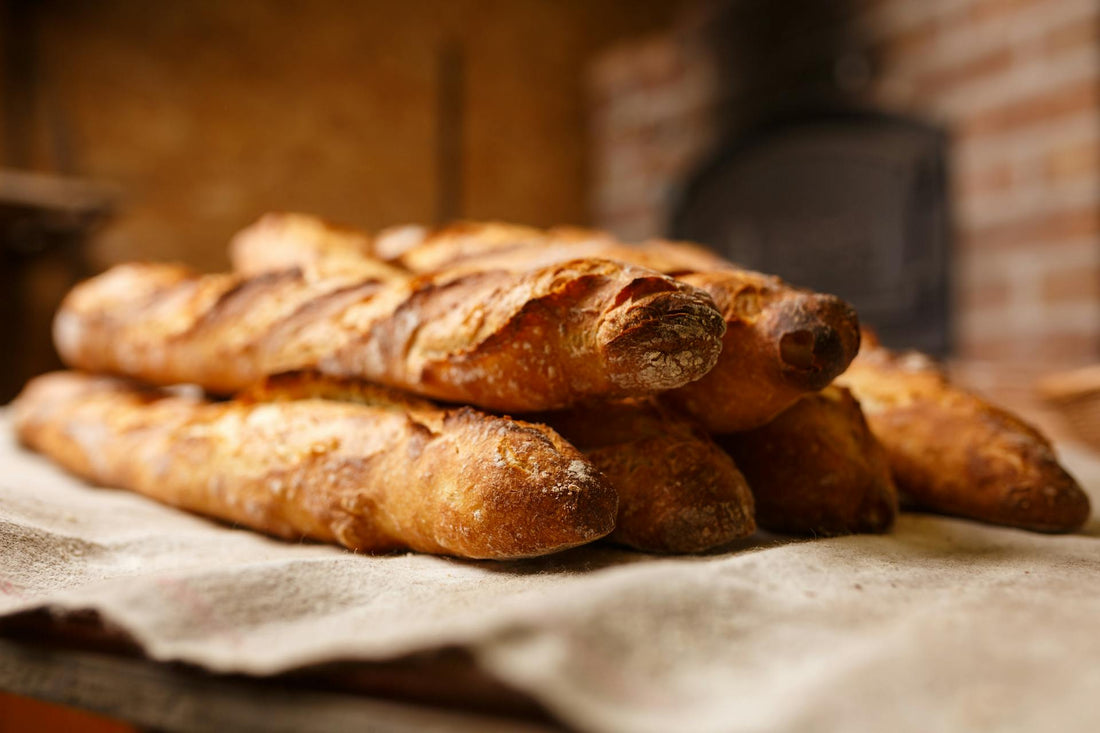
How to tell if it's a good baguette, according to the French
In France, the baguette is more than just bread—it's a cultural institution. A true staple of daily life, the quality of a baguette is a serious matter, and any French person worth their sel de mer knows how to distinguish an exceptional one from a lackluster impostor. So how do you tell if a baguette is the real deal? Here's what the French look for.
1. The Crust: Golden, Crisp, and Slightly Uneven
A great baguette should have a deep golden-brown crust with a slightly blistered texture. If it's too pale, it was likely underbaked, leaving it without the proper crunch. Too uniform in color? That's a sign of industrial baking. When you squeeze it lightly, it should crackle—this is what the French call la musique du pain (the music of bread).
2. The Shape: Slender and Well-Formed
An authentic baguette tradition (as opposed to factory-made supermarket bread) has an elegant, slightly irregular shape. It should taper at the ends rather than be cut bluntly, a sign that it was hand-rolled rather than mass-produced.
See also: Chez Meunier in 19eme crowned as The best croissant in Paris
 Photo by SHVETS production
Photo by SHVETS production
3. The Scoring: Deep and Artisanal
Look at the cuts along the top. A skilled baker will have made clean, confident slashes that open naturally during baking, forming a slightly raised ridge. If the cuts are too shallow or barely visible, it's a sign of rushed or careless preparation.
4. The Weight: Light but Substantial
A good baguette should feel light in the hand, never dense or heavy. This indicates proper fermentation, which allows the dough to develop air pockets and a delicate texture. A dense baguette, on the other hand, often signals an industrial process with too little fermentation time.
5. The Interior: Open, Irregular, and Cream-Colored
Break the baguette open—this is where the magic happens. The crumb (interior) should be an off-white, creamy color with an airy, irregular structure. Big and small holes should coexist, showing that the dough has risen naturally. If the inside is too uniform, dense, or overly white, it likely contains additives or was made with low-quality flour.
See also: Tharshan Selvarajah of Au levain des Pyrénées wins Best Traditional French Baguette 2023
6. The Smell: Subtly Nutty and Complex
A proper baguette smells of roasted nuts, butter, and a hint of fermentation. If there's no aroma at all, it's likely a mass-produced version with little flavor development.
7. The Taste: Balanced and Long-Lasting
Finally, the most important test—how does it taste? A well-made baguette has a crisp, slightly caramelized crust that gives way to a soft, flavorful interior with hints of wheat, nuts, and slight acidity from natural fermentation. The flavor should linger rather than vanish after the first bite.
The Best Baguette? Always from a Boulangerie Artisanale
If you want the real deal, always buy from an artisan boulangerie rather than a supermarket. In France, the baguette de tradition (regulated by law) is made with only flour, water, salt, and yeast—no additives, no shortcuts. If you see a sign saying Baguette Tradition, you're in good hands.
The next time you pick up a baguette, use these tips to see if it lives up to French standards. Because in France, not all baguettes are created equal—and once you've tasted a good one, there's no going back.




